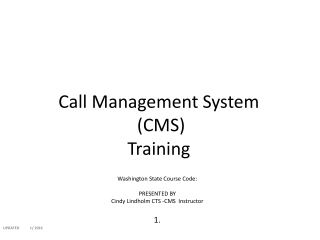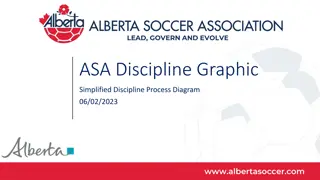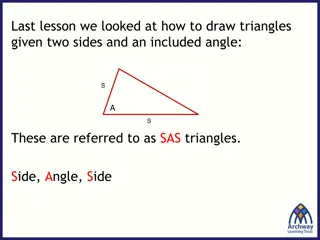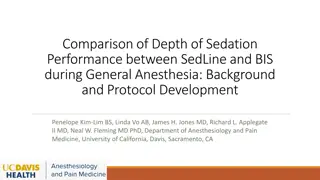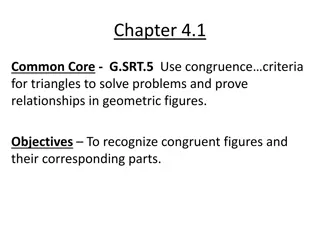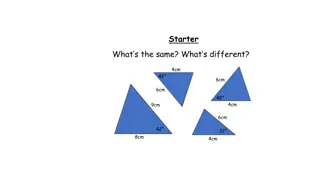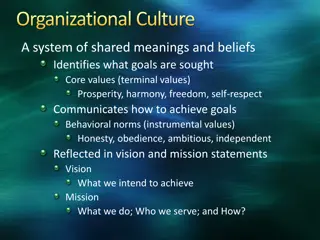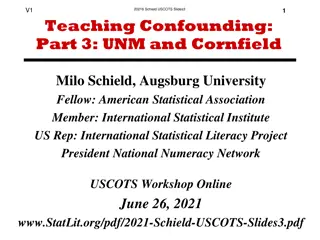
Statistical Inference for Managers by Milo Schield
Explore the insights shared in Milo Schield's research on statistical inference for managers, highlighting the unique needs of managers in dealing with statistics and data analysis in various contexts. Gain valuable perspectives on statistical significance, correlation, and more, tailored to the needs of managerial decision-making.
Download Presentation

Please find below an Image/Link to download the presentation.
The content on the website is provided AS IS for your information and personal use only. It may not be sold, licensed, or shared on other websites without obtaining consent from the author. If you encounter any issues during the download, it is possible that the publisher has removed the file from their server.
You are allowed to download the files provided on this website for personal or commercial use, subject to the condition that they are used lawfully. All files are the property of their respective owners.
The content on the website is provided AS IS for your information and personal use only. It may not be sold, licensed, or shared on other websites without obtaining consent from the author.
E N D
Presentation Transcript
V4 1 2015 ASA Statistical Inference for Managers by Milo Schield, Augsburg College Member: International Statistical Institute US Rep: International Statistical Literacy Project Director, W. M. Keck Statistical Literacy Project August 11, 2015 Paper: www.StatLit.org/pdf/2015-Schield-ASA.pdf Slides: www.StatLit.org/pdf/2015-Schield-ASA-6up.pdf
V4 2 2015 ASA Teachers in Top 10 to 20%; Teachers are Unlike Students . SAT (CR+M): US College-Bound Seniors 1600 Top 25 Colleges 1400 St. Thomas 1203 Augsburg 1200 1070 1000 Community Colleges 800 Mean: 1010 StdDev: 218 600 400 0 20 40 60 80 100 Percentile CollegeBoard 2014
V4 3 2015 ASA Teachers Mainly Math/Stat; Teachers are Unlike Students Stat Educators @JSM are a biased sample
V4 4 2015 ASA Biz Stat-Teachers at Top End Biz Teachers Unlike Biz Students Quantitative majors (left) focus on problem solving Qualitative majors (right) focus on critical thinking Biggest group of Stat-Ed teachers teach upper-left. Biggest group of business majors is in lower-right.
V4 5 2015 ASA Managers have Different Statistical Needs .
V4 6 2015 ASA Managers have unique needs More breadth than consumers. More on big data, (coincidence & confounding) and on time series. Less on the logic of inference than producers. Math Colleagues: Is this STAT LITE??? Bold reply: No! It s not Stat-Lite. Yes; Less on formula derivation and test details. More on understanding statistical significance and sampling distributions.
V4 7 2015 ASA R-sq = 0.49; N = 9. Is this statistically significant? Yes! R > 2/Sqrt(n) is sufficient. Schield (2014b)
V4 8 2015 ASA Correlation = 93.6%. Is this statistically significant? www.tylervigen.com No! Normal statistical-significance minimums don t apply to time-based correlations.
V4 9 2015 ASA Chi-sq = 12.5; Six bins. Is this statistically significant? YES! 2 > 2*#bins is sufficient. Schield (2014c)
V4 10 2015 ASA Is Statistical Significance Necessary for Causation? ZICAM: homeopathic remedy clinically proven to reduce symptoms of common cold Of the millions of users, ~ten lost their sense of smell Zicam defense; Ten is not statistically significant. US Supreme Court: Lack of statistical significance is not an acceptable defense. See Schield (2011).
V4 11 11 2015 ASA Influence of Bias & Confounding on Statistical Significance Bias: Subject bias, measurement bias and sampling bias See Schield (2013). Confounder: A factor related to the predictor and to the outcome in an association that (1) has a causal influence on the outcome and (2) is not causally influenced by the predictor. See Schield (2006 and 2014a)
12 V4 2015 ASA Influence of Bias on Significance Response bias: Men likely to overstate income Sample bias: Rich less likely to do surveys
13 V4 2015 ASA Control for Mom s Age
14 V4 2015 ASA Controlling for a Confounder Can Change Statistical Significance
V4 15 15 2015 ASA Understanding the Logic of Statistical Inference McKenzie (2004) asked statistical educators to pick the top-three core concepts in intro statistics: 75% Variation 31% Association vs. causation 25% Hypothesis tests and 24% Sampling distribution 22% Confidence intervals 14% Randomness and statistical significance %: Percentage of votes by Statistical Educators Sample size: 56; 95% ME = 12 percentage points
V4 16 16 2015 ASA Understanding the Logic of Statistical Inference Teaching randomness and statistical significance is necessary but not sufficient. Students need to understand and appreciate the sampling distribution. But deriving the sampling distribution takes time. Randomization takes time and a computer. What to do with minimal time & no computer? See the final paper for more on this topic.
V4 17 17 2015 ASA Conclusion Managers need a statistics curriculum that is better aligned with their work. Less on the derivation of sampling error; More on understanding sampling distributions Less on p-value; More on statistical significance
V4 18 18 2015 ASA References McKenzie, John, Jr. (2004) . Teaching the Core Concepts. ASA www.statlit.org/pdf/2004McKenzieASA.pdf Schield, M. (2015). Statistically-Significant Shortcuts. Statchat, Macalester. www.statlit.org/pdf/2015-Schield-StatChat-Slides.pdf Schield, M. (2014c). Chi Squared Cutoffs for Statistical Significance. NNN www.statlit.org/pdf/2014-Schield-SS-Shortcut-Chi-Square.pdf Schield, M. (2014b). Statistically-Significant Correlations. NNN Carleton. www.statlit.org/pdf/2014-Schield-NNN4-Slides.pdf Schield, M. (2014a). Two Big Ideas for Teaching Big Data: ECOTS. www.statlit.org/pdf/2014-Schield-ECOTS.pdf Schield, M. (2011). Zicam and the US Supreme Course. www.statlit.org/pdf/2011Schield-ASA-Zicam6up.pdf Schield, M. (2006). Presenting Confounding & Standardization Graphically. STATS Magazine. www.StatLit.org/pdf/2006SchieldSTATS.pdf

